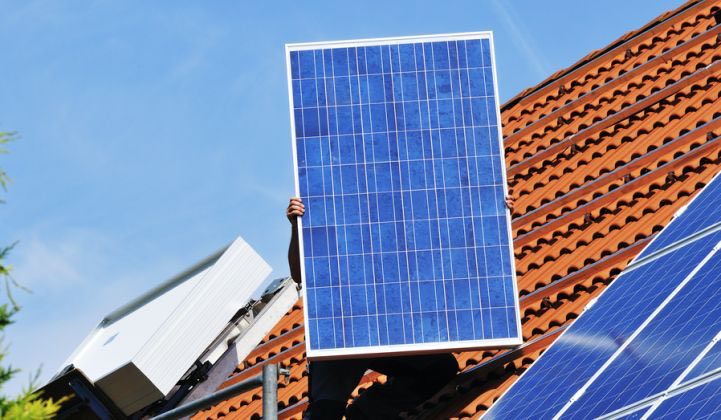
Calls to stanch the flow of Victoria’s rooftop solar rebate by narrowing the eligibility criteria are being resisted by state government, after the entire first month’s quota for applications was filled in just three days.
The Clean Energy Council last week called on the state Labor government to lower the household income threshold from a maximum of $180,000 a year to $100,000, to help better regulate uptake of the subsidy on rooftop panels.
The CEC issued the call in response to growing industry frustration, after the first month’s allotment of 3,333 applications for the solar subsidy was exhausted within days of opening on July 01, effectively putting the scheme on hold – again – until August.
The renewables body said that while it supported the scheme in principle, the way it was being managed was starting to cause serious industry distress, and needed urgent review.
But the government has rejected suggested changes to household income criteria – first proposed by the Smart Energy Council and industry grouping Solar Cutters – arguing that it would only succeed in excluding the majority of dual income households in the state.
“There are no plans to change the eligibility criteria for the Solar Homes program,” energy minister Lily D’Ambrosio said in comments emailed to RenewEconomy.
“Reducing the eligibility criteria to under $100,000 would not create a significant amount of new installs, as 70 per cent of all participating households are already within this bracket.
“However reducing the income threshold would risk locking-out most dual income families and many hardworking Victorians like teachers, nurses and firefighters, from accessing the solar rebates,” D’Ambrosio said.
The Andrews government’s Solar Homes rebate scheme, which offers discounts of up to $2,225 per household PV system, has been hugely popular since its soft launch last year, driving a spike in residential installs for the state of Victoria.
And while this is – on paper – a good thing for the rooftop solar industry, it has been criticised for creating a “solar-coaster” effect, with retailers and installers left to negotiate extreme ups and downs in demand and supply.
To try to remedy this, Solar Victoria – the government body charged with overseeing the scheme – introduced monthly quotas, to stagger the roll out of the 40,000 PV systems the scheme intends to deliver.
But the speed with which the July lot of applications were snapped up – which Solar Victoria attributed to “pent-up demand” following a previous months-long pause in the scheme – has raised concerns that the solar coaster is well and truly back in effect.
“We have been fielding calls and emails from you for the last few weeks about the effect that the government’s management of the program is having on your businesses and you as solar installers,” CEC chief executive Kane Thornton said in an email to solar installers last Thursday.
“It is ridiculous to have a situation where a program with a month-by-month quota filled up in the first three days of July, with the same outcome expected in the August round.
“We are calling for the government to commence a review of the program by the end of next week.
“While we continue to push for a review, we are seeking your help to raise this issue to the attention of the Victorian Premier. We need strong numbers to let the Premier know the seriousness of the current situation and to hear the stories from those most affected.”
Meanwhile, applications are still open for discounts of up to $4,838 on home battery systems, via a staggered roll-out to a total of 1000 homes – 200 from 1 July, 400 from 1 November and 400 from 1 March 2020.
(The battery subsidy is limited to households in a select number of postcodes throughout the state, listed on the Solar Victoria website.)
At the time of publication (Monday July 15 1.30pm), there were 155 applications remaining, out of a total 200.

Sophie is editor of One Step Off The Grid and deputy editor of its sister site, Renew Economy. Sophie has been writing about clean energy for more than a decade.



